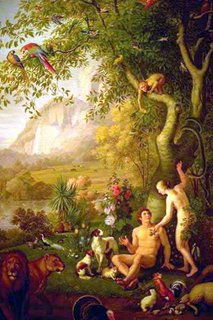Introduction into spiritual adulthood. As has been explained before, many people who go for the first time find the experience strange. It can be a shock to the spiritual expectations from years of church attendance. Most of Latter-day Saint worship is restrained and holds little ceremony. It can be very disorienting to suddenly find yourself in a highly stylized and symbolic service.
I think there is a reason for this, and one that is overlooked by newcomers and initiated alike. Many cultures have ceremonies that mark the time of adulthood. Many of them are unlike anything the person has gone through before. The idea is to test the strength of an individual for the harsher realities of life. Finishing the ordeal teaches the person becoming an adult about themself. The Temple is similar, only there is a spiritual rather than a physical reorientation. The participant has left the old life and entered a new one.
Finding the Kingdom of Heaven within ourselves. Many have compared the Temple to the Gate of Heaven, where you enter into the Spiritual realm of God. Hugh Nibley has said a temple represents both the center of the Universe where the physical and spiritual unite. It is at the Temple that we are reminded of both our place and our potential in the vastness of Eternity. We follow Adam and Eve from the Garden of Immortality and stagnation, the growth and sacrifice of Mortality, and finally to the Exaltation and Eternal Life of the Celestial World. Our mission and destiny is brought to rememberance. We are promised the possibility of becoming the seed of the Son of God.
Making Covenants and symbolically utilizing the Atonement. Latter-day Saints are a covenant people. Like many other Christians, we are asked to take upon us the name of Christ. It is in the Temple that we most boldly take on the blessing and the challenge to become more like Christ in our conduct and faith. We make promises to remain moral individuals, and Loyal to Christ and what we consider to be His Church on Earth. In return, and through symbolic actions, we are able to progress and change through the Atonement of Christ toward Exaltation.
Bring Salvation to others. The most important purpose of the Temple is to bridge the gap between the living and the dead. Modern prophets, starting with Joseph Smith, have emphasised this aspect of Temple service. Joseph Smith explained it best in Doct.& Cov. 128 when talking about work for the dead:
17 And again, in connection with this quotation I will give you a quotation from one of the prophets, who had his eye fixed on the restoration of the priesthood, the glories to be revealed in the last days, and in an especial manner this most glorious of all subjects belonging to the everlasting gospel, namely, the baptism for the dead; for Malachi says, last chapter, verses 5th and 6th: Behold, I will send you Elijah the prophet before the coming of the great and dreadful day of the Lord: And he shall turn the heart of the fathers to the children, and the heart of the children to their fathers, lest I come and smite the earth with a curse.
18 I might have rendered a plainer translation to this, but it is sufficiently plain to suit my purpose as it stands. It is sufficient to know, in this case, that the earth will be smitten with a curse unless there is a welding link of some kind or other between the fathers and the children, upon some subject or other—and behold what is that subject? It is the baptism for the dead. For we without them cannot be made perfect; neither can they without us be made perfect. Neither can they nor we be made perfect without those who have died in the gospel also; for it is necessary in the ushering in of the dispensation of the fulness of times, which dispensation is now beginning to usher in, that a whole and complete and perfect union, and welding together of dispensations, and keys, and powers, and glories should take place, and be revealed from the days of Adam even to the present time. And not only this, but those things which never have been revealed from the foundation of the world, but have been kept hid from the wise and prudent, shall be revealed unto babes and sucklings in this, the dispensation of the fulness of times.
when the purpose of the Temple is realized, both in the work and in ourselves, the Kingdom of God will become stronger. Both the living and the dead will have a greater hope in Christ and His Atonement. The dream of Zion will possible when more Latter-day Saints take the Temple seriously for what it is; a House of God for the Salvation of His Children.




